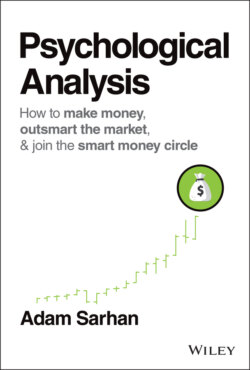Читать книгу Psychological Analysis - Adam Sarhan - Страница 55
OPERATIONAL TIME FRAMES
ОглавлениеSome people choose to operate on an intraday basis—day trading. It is very tempting to day trade, and it may work at times, but I would be remiss not to note that since I started trading in the 1990s, I have yet to meet a day trader who is successful over multiple market cycles in the long term. Swing traders prefer to make their decisions and hold a stock for a few days to a few months. Position traders prefer to make their decisions on a weekly or monthly basis. Longer‐term investors prefer to make decisions quarterly or annually.
Many financial advisors meet with their clients quarterly or annually to execute long‐term investment strategies. When I developed my first trading newsletter, I found that publishing weekly made the most sense, and I began looking at market trends on a weekly basis, making my buy, sell, and hold decisions mostly on the weekends when the market was closed. That worked best for me and my strengths. I am very good at analyzing the macro landscape—the “big picture”—and very bad at micro details. On Wall Street, I've learned (and it took me many years to learn this) that I do very well interpreting weekly charts, and do very poorly at trying to make a decision based on a one‐minute intraday chart.
The good news is that there is no right or wrong when it comes to the investment rhythm you choose; you can make money in any time frame. The key is to find the trading strategy that works well for you.
